
A medal or medallion is a small portable artistic object, a thin disc, normally of metal, carrying a design, usually on both sides. They typically have a commemorative purpose of some kind, and many are given as awards. They may be intended to be worn, suspended from clothing or jewellery in some way. They may be struck like a coin by dies or die-cast in a mould.

The United States Armed Forces awards and decorations are primarily the medals, service ribbons, and specific badges which recognize military service and personal accomplishments while a member of the U.S. Armed Forces. Such awards are a means to outwardly display the highlights of a service member's career.
A souvenir , memento, keepsake, or token of remembrance is an object a person acquires for the memories the owner associates with it. A souvenir can be any object that can be collected or purchased and transported home by the traveler as a memento of a visit. The object itself may have intrinsic value, or be a symbol of experience. Without the owner's input, the symbolic meaning is lost and cannot be articulated.
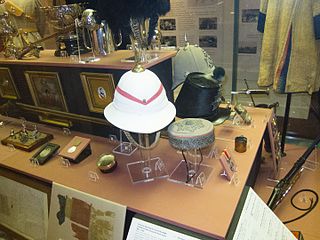
Militaria, also known as military memorabilia, are military equipment which are collected for their historical significance. Such items include firearms, swords, sabres, knives, bayonets, helmets and other equipment such as uniforms, military orders and decorations and insignia.

The Ternus illusion, also commonly referred to as the Ternus Effect is an illusion related to human visual perception involving apparent motion. In a simplified explanation of one form of the illusion, two discs, are shown side by side as the first frame in a sequence of three frames. Next a blank frame is presented for a very short, variable duration. In the final frame, two similar discs are then shown in a shifted position. Depending on various factors including the time intervals between frames as well as spacing and layout, observers perceive either element motion, in which L appears to move to R while C remains stationary or they report experiencing group motion, in which L and C appear to move together to C and R. Both element motion and group motion can be observed in animated examples to the right in Figures 1 and 2.
NATO Joint Military Symbology is the NATO standard for military map marking symbols. Originally published in 1986 as Allied Procedural Publication 6 (APP-6), NATO Military Symbols for Land Based Systems, the standard has evolved over the years and is currently in its fifth version (APP-6D). The symbols are designed to enhance NATO's joint interoperability by providing a standard set of common symbols. APP-6 constituted a single system of joint military symbology for land, air, space and sea-based formations and units, which can be displayed for either automated map display systems or for manual map marking. It covers all of the joint services and can be used by them.

A battle honour is an award of a right by a government or sovereign to a military unit to emblazon the name of a battle or operation on its flags ("colours"), uniforms or other accessories where ornamentation is possible.
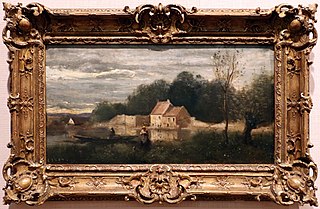
A picture frame is a protective and decorative edging for a picture, such as a painting or photograph. It makes displaying the work safer and easier and both sets the picture apart from its surroundings and aesthetically integrates it with them.
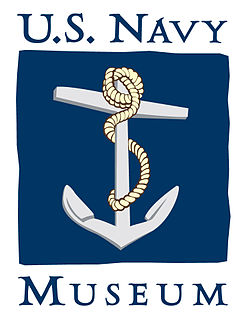
The National Museum of the United States Navy, or U.S. Navy Museum for short, is the flagship museum of the United States Navy and is located in the former Breech Mechanism Shop of the old Naval Gun Factory on the grounds of the Washington Navy Yard in Washington, D.C., United States.

Unofficial badges of the United States military are those badges or emblems that do not appear in United States military regulations but that many individuals serving in the United States military wear or display. Unofficial badges may also be bestowed for a one time action or be authorized under the authority of a local commander.
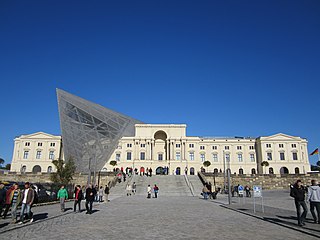
The Bundeswehr Military History Museum is the military museum of the German Armed Forces, the Bundeswehr, and one of the major military history museums in Germany. It is located in a former military arsenal in the Albertstadt which is part of Dresden. After a long history of switching titles and approaches to military history, the museum was re-opened in 2011 with a new internal and external concept. The museum focuses on the human aspects of war, while also showcasing the evolution of German military technology.

A display case is a cabinet with one or often more transparent tempered glass surfaces, used to display objects for viewing. A display case may appear in an exhibition, museum, retail store, restaurant, or house. Often, labels are included with the displayed objects, providing information such as description or prices. In a museum, the displayed cultural artifacts are normally part of the museum's collection, or are part of a temporary exhibition. In retail or a restaurant, the items are normally being offered for sale. A trophy case is used to display sports trophies or other awards.

Somali art is the artistic culture of the Somali people, both historic and contemporary. These include artistic traditions in pottery, music, architecture, woodcarving and other genres. Somali art is characterized by its aniconism, partly as a result of the vestigial influence of the pre-Islamic mythology of the Somalis coupled with their ubiquitous Muslim beliefs. However, there have been cases in the past of artistic depictions representing living creatures such as the golden birds on the Mogadishan canopies, the ancient rock paintings in Somaliland, and the plant decorations on religious tombs in Somalia, but these are considered rare. Instead, intricate patterns and geometric designs, bold colors and monumental architecture was the norm.

Bob Hope Patriotic Hall is a 10-story building that was dedicated as Patriotic Hall by the Los Angeles Board of Supervisors in 1925 and was built to serve veterans of Indian Wars, Spanish–American War, World War I and to support the Grand Army of the Republic. It serves as the home of the Los Angeles County Department of Military and Veterans Affairs. Patriotic hall was rededicated to honor of Bob Hope and renamed "Bob Hope Patriotic Hall" on November 12, 2004.

Vatican Splendors: A Journey Through Faith and Art is a touring exhibit of religious and historical objects from the Vatican, some of them nearly two thousand years old. In 2010-11, the exhibit toured six cities in the U.S.: Cleveland, St. Paul, St. Petersburg, St. Louis, Pittsburgh, and Fort Lauderdale, and continued to São Paulo, Brazil.

The Kriegsmarine was the navy of Nazi Germany prior to and during World War II. Kriegsmarine uniform design followed that of the preexisting Reichsmarine, itself based on that of the First World War Kaiserliche Marine. Kriegsmarine styles of uniform and insignia had many features in common with those of other European navies, all derived from the British Royal Navy of the 19th century, such as officers' frock coats, sleeve braid, and the "sailor suit" uniform for enlisted personnel and petty officers.

A cabinet is a case or cupboard with shelves and/or drawers for storing or displaying items. Some cabinets are stand alone while others are built in to a wall or are attached to it like a medicine cabinet. Cabinets are typically made of wood, coated steel, or synthetic materials. Commercial grade cabinets usually have a melamine-particleboard substrate and are covered in a high pressure decorative laminate, commonly referred to as Wilsonart or Formica.
Family folklore is the branch of folkloristics concerned with the study and use of folklore and traditional culture transmitted within an individual family group. This includes craft goods produced by family members or memorabilia that have been saved as reminders of family events. It includes family photos, photo albums, along with bundles of other pages held for posterity such as certificates, letters, journals, notes, and shopping lists. Family sayings and stories which recount true events are retold as a means of maintaining a common family identity. Family customs are performed, modified, sometimes forgotten, created or resurrected with great frequency. Each time the result is to define and solidify the perception of the family as unique.
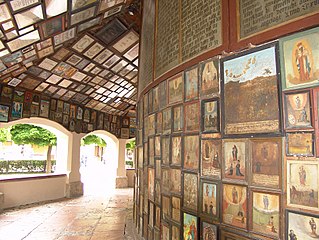
A votive offering or votive deposit is one or more objects displayed or deposited, without the intention of recovery or use, in a sacred place for religious purposes. Such items are a feature of modern and ancient societies and are generally made in order to gain favor with supernatural forces.
"'Shadow Box" is the tenth episode of the second season of the American television drama series Person of Interest. It is the 33rd overall episode of the series and is written by co-executive producer Patrick Harbinson and directed by Stephen Surjik. It aired on CBS in the United States and on CTV in Canada on December 13, 2012. The episode's title refers to "Shadow box", an enclosed glass-front display case containing an object or objects presented in a thematic grouping with artistic or personal significance.
















